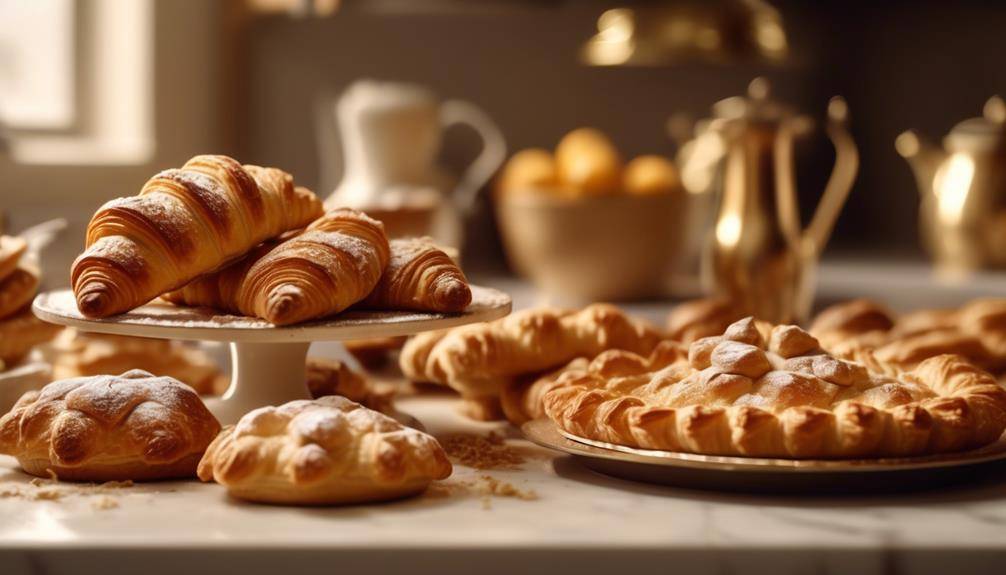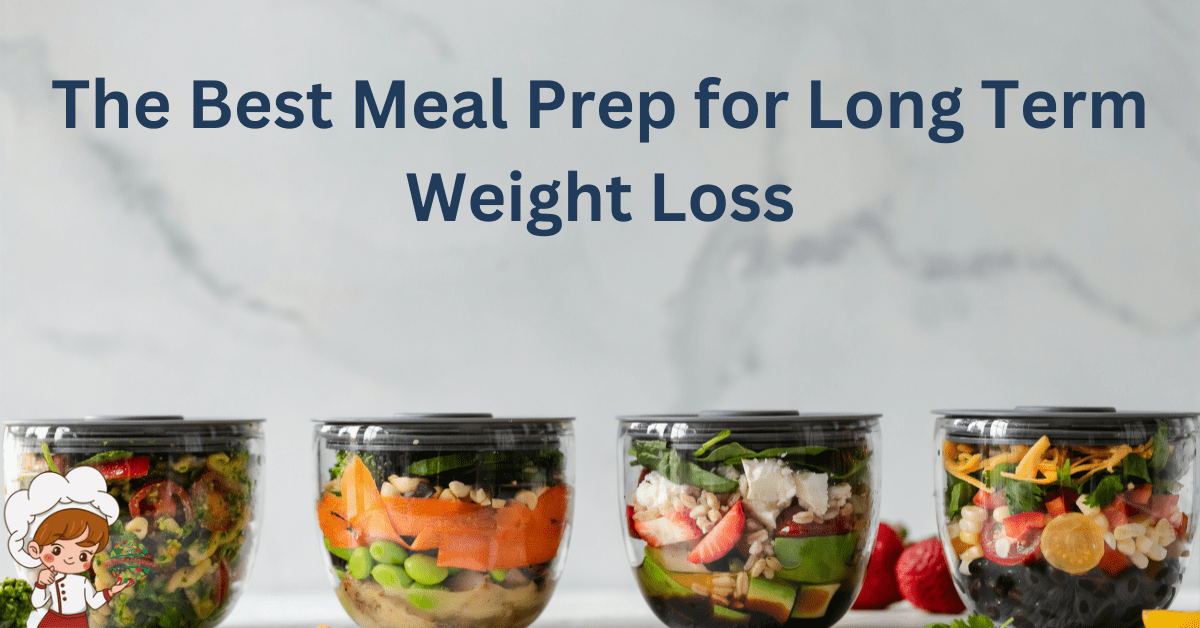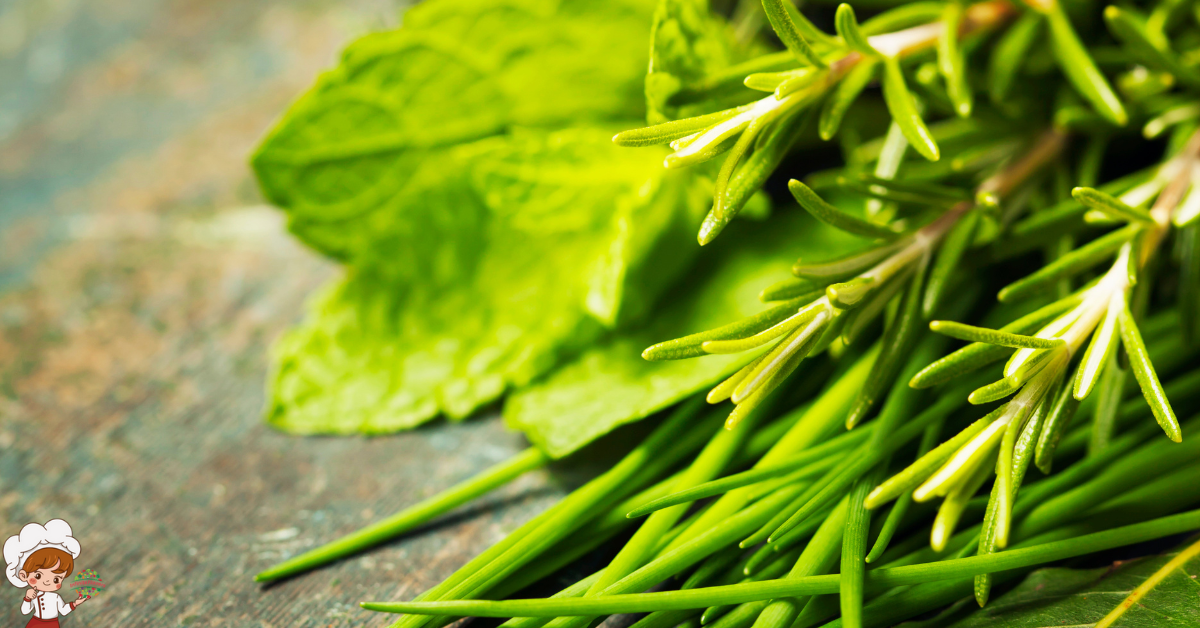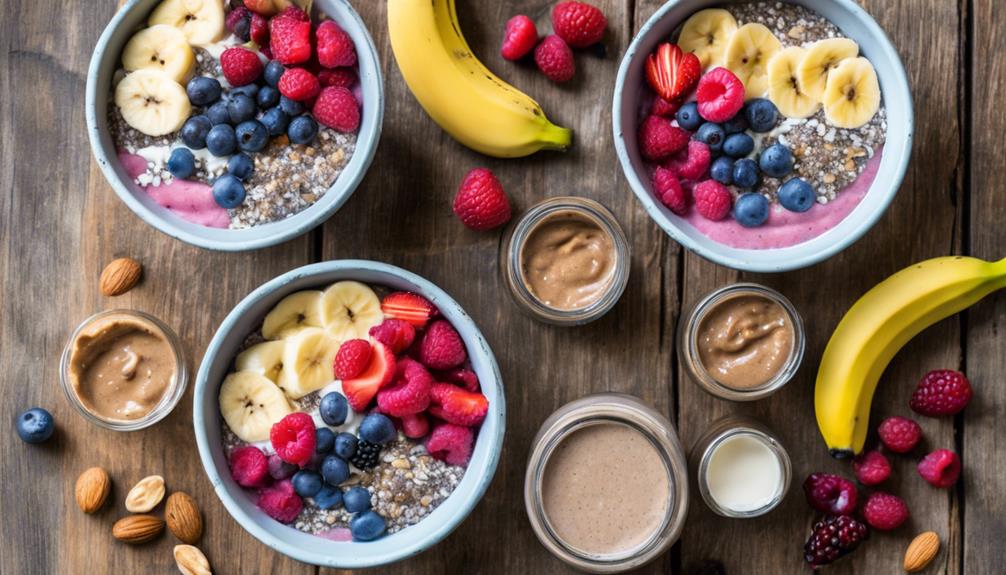Your Ultimate Guide To Gluten-Free Pastry Baking

Guide To Gluten-Free Pastry Baking; Did you know that gluten-free pastry baking can be just as delicious and satisfying as traditional baking? If you’ve been hesitant to try your hand at gluten-free pastries, let this guide be your ultimate resource. From understanding the basics of gluten-free pastry to mastering essential techniques, this guide will provide you with all the knowledge and tips you need to create mouthwatering gluten-free treats. Get ready to discover the secrets of achieving the perfect texture, explore a variety of delectable recipes, and troubleshoot common issues along the way. Whether you’re new to gluten-free baking or a seasoned pro, this guide will be your go-to companion in creating delectable gluten-free pastries that everyone will love.
Understanding Gluten-Free Pastry Basics
To understand the basics of gluten-free pastry, it is essential to grasp the key concepts and techniques involved in creating delicious and successful gluten-free baked goods. Gluten-free pastry flavor profiles can vary greatly from traditional wheat-based pastries. Without the gluten protein, which provides structure and elasticity, gluten-free pastries often have a denser texture and a slightly different taste. However, with the right ingredients and techniques, you can still achieve a flavorful and enjoyable gluten-free pastry.
One common mistake in gluten-free pastry baking is using the wrong flour blend. It is important to choose a gluten-free flour blend that is specifically formulated for baking. These blends often contain a mixture of alternative flours such as rice flour, tapioca flour, and potato starch. Each flour adds its own unique flavor and texture to the pastry. Experimenting with different flour blends can help you find the perfect combination for your desired flavor profile.
Another common mistake is overmixing the dough. Gluten-free dough is more delicate and can become tough if overworked. It is important to mix the ingredients just until they are combined, avoiding excessive kneading or beating. This will help maintain a tender and light texture in the finished pastry.
Essential Ingredients for Gluten-Free Pastry Baking
When it comes to gluten-free pastry baking, selecting the right ingredients is crucial for achieving the desired texture and flavor. Gluten-free pastry techniques require specific ingredients that can mimic the structure and elasticity provided by gluten. In this section, we will explore the essential ingredients you need to create delicious gluten-free pastries.
- Gluten-Free Flour Blend: A good gluten-free flour blend is the foundation of any gluten-free pastry recipe. Look for a blend that combines different flours like rice flour, tapioca flour, and potato starch. This combination will provide a balance of flavors and textures.
- Xanthan Gum or Guar Gum: These binding agents are often added to gluten-free pastry recipes to replace the function of gluten. They help improve the elasticity and structure of the dough. Use them in small amounts according to the recipe instructions.
- Alternative Dairy-Free Milk: Many gluten-free pastry recipes call for dairy-free milk as a substitute for regular milk. Almond milk, rice milk, or oat milk are popular choices. These options add moisture and richness to the dough.
- Eggs or Egg Replacers: Eggs are commonly used in gluten-free pastry recipes to provide structure and moisture. If you have an egg allergy or prefer not to use eggs, there are egg replacers available that can mimic the binding and moisture properties of eggs.
- Fat: Fat is essential for creating a tender and flaky pastry. Use a gluten-free butter or a non-hydrogenated vegetable shortening for the best results. Make sure the fat is cold and cut it into small pieces before incorporating it into the dough.
Tips for Achieving the Perfect Gluten-Free Pastry Texture
To achieve the perfect texture in gluten-free pastry, it’s important to consider flour alternatives and employ specific techniques. When it comes to flour alternatives, options like rice flour, almond flour, and tapioca flour can be used to mimic the structure and texture of gluten. Additionally, techniques such as chilling the dough, using cold ingredients, and incorporating fats in a specific manner can help create a flaky, tender pastry crust.
Flour Alternatives for Gluten-Free Pastry
For achieving the perfect texture in gluten-free pastry, consider utilizing alternative flours that provide a similar consistency to traditional wheat flour. Here are five flour alternatives that can help you achieve the desired texture in your gluten-free pastry:
- Almond flour: Made from ground almonds, almond flour adds a moist and tender texture to your pastry. It also provides a subtle nutty flavor.
- Rice flour: Rice flour, especially brown rice flour, is a popular option for gluten-free baking. It has a neutral taste and can provide a light and crumbly texture to your pastry.
- Coconut flour: Coconut flour is highly absorbent and adds moisture to your pastry. It has a sweet and nutty flavor, which can complement various pastry recipes.
- Potato starch: Potato starch is commonly used as a starch substitute in gluten-free baking. It helps improve the texture and tenderness of your pastry.
- Tapioca flour: Tapioca flour, also known as tapioca starch, adds chewiness and elasticity to your pastry. It is often combined with other gluten-free flours for better results.
Experimenting with these alternative flours can help you achieve the perfect texture in your gluten-free pastry.
Techniques for Achieving Flaky Texture
To achieve a flaky texture in your gluten-free pastry, employing specific techniques is essential. Here are some tried and tested techniques that will help you achieve the perfect flaky texture in your gluten-free pastries. First, it is important to use the best gluten-free flours available. Opt for a blend of flours like rice flour, tapioca flour, and potato starch. These flours have a finer texture and better binding properties, which contribute to a flakier pastry.
Additionally, make sure to keep your ingredients and equipment cold. Cold ingredients and tools prevent the formation of gluten and help maintain the structure of the pastry, resulting in a flaky texture. Finally, avoid over-mixing the dough. Over-mixing can make the pastry tough and dense, so handle the dough gently and only mix until the ingredients are incorporated. By following these techniques, you can create gluten-free pastries with a delightful flaky texture.
Mastering Gluten-Free Pastry Techniques
To master gluten-free pastry techniques, it is crucial to start with the proper flour selection. Look for gluten-free flours that have a combination of different grains and starches to achieve the desired texture and taste. When it comes to mixing and handling the dough, gentle and minimal handling is key to prevent overworking the gluten-free ingredients and resulting in a tough and dense pastry.
Proper Flour Selection
Selecting the appropriate flour is a crucial step in mastering gluten-free pastry techniques, as it directly impacts the texture and structure of your baked goods. To ensure success in your gluten-free baking endeavors, here are five key considerations when it comes to gluten-free flour options and proper flour storage:
- Type of flour: There are various gluten-free flour options available, such as almond flour, rice flour, tapioca flour, and sorghum flour. Each type has its unique properties and can be used alone or in combination to achieve the desired texture and flavor in your pastries.
- Protein content: Gluten-free flours lack the protein structure found in wheat flour. Therefore, it is important to choose flours with higher protein content, like quinoa flour or chickpea flour, to help improve the structure and rise of your pastries.
- Storing gluten-free flour: Store your gluten-free flours in airtight containers in a cool, dark place to prevent moisture absorption and prolong shelf life. You can also refrigerate or freeze them to maintain freshness.
- Blending flours: Experimenting with different flour blends can yield superior results. Combining flours with different textures and flavors can help create a more balanced and delicious gluten-free pastry.
- Flour substitutions: If a recipe calls for a specific gluten-free flour that you don’t have, you can often substitute it with another gluten-free flour that has similar properties. Just be mindful of any adjustments needed in terms of texture and taste.
Mixing and Handling Techniques
Mastering gluten-free pastry techniques requires careful attention to mixing and handling techniques to achieve optimal results. When it comes to mixing, it is important to use the right tools for the job. A stand mixer with a paddle attachment is ideal for incorporating the ingredients evenly and efficiently. Avoid overmixing, as it can lead to a tough and dense pastry. Instead, mix until just combined.
Handling gluten-free pastry dough requires a gentle touch. Unlike traditional dough, gluten-free dough is more fragile and can easily crumble. To prevent this, it is recommended to use a combination of plastic wrap and a rolling pin when rolling out the dough. This method helps to keep the dough intact and makes it easier to transfer it to the baking dish.
Pre-baking techniques are also important in gluten-free pastry baking. Blind baking the crust before adding the filling helps to prevent a soggy bottom. To do this, simply line the pastry with parchment paper or aluminum foil and fill it with pie weights or dried beans. Bake the crust for a few minutes until it turns golden brown.
Delicious Gluten-Free Pastry Recipes for Every Occasion
For those seeking delectable gluten-free pastry recipes to suit any occasion, look no further. These recipes will satisfy your cravings while accommodating your dietary restrictions. Whether you’re baking for a special celebration or simply indulging in a sweet treat, these gluten-free pastries are sure to impress.
Here are five mouthwatering recipes to try:
- Lemon Blueberry Tart: A tangy lemon filling paired with juicy blueberries on a gluten-free almond crust. This refreshing tart is perfect for summer gatherings.
- Chocolate Ganache Tart: Indulge in the rich flavors of a decadent chocolate ganache filling on a gluten-free chocolate crust. Top it off with fresh berries for an elegant touch.
- Apple Cinnamon Hand Pies: Enjoy the comforting combination of sweet apples and warm cinnamon in a handheld gluten-free pastry. These pies are great for picnics or a cozy fall dessert.
- Raspberry Cream Puffs: Delicate gluten-free choux pastry filled with luscious raspberry cream. These bite-sized treats are ideal for afternoon tea or a fancy brunch.
- Strawberry Shortcake: Layers of tender gluten-free biscuit, fresh strawberries, and whipped cream create a classic dessert that everyone will love. Perfect for summer parties or a sweet ending to any meal.
When it comes to gluten-free pastry fillings, the possibilities are endless. From fruit compotes and custards to chocolate mousse and nut butter, you can get creative and tailor the fillings to your preferences. Remember to use gluten-free ingredients and check labels for hidden gluten.
To add a touch of elegance to your gluten-free pastries, try experimenting with creative decorations. You can use edible flowers, chocolate drizzles, powdered sugar dustings, or even piped designs with dairy-free whipped cream. The key is to have fun and let your imagination run wild.
With these delicious gluten-free pastry recipes and your creativity, you can enjoy indulgent treats without sacrificing taste or texture. So go ahead and satisfy your sweet tooth with confidence!
Troubleshooting Common Issues in Gluten-Free Pastry Baking
If you’ve encountered any challenges while baking gluten-free pastries, don’t worry, we’re here to help troubleshoot common issues so you can achieve delicious results every time. When it comes to gluten-free pastry baking, there are a few common problems that you may encounter, such as pastry crumbling and the pastry becoming too dense. However, with a few tips and tricks, you can overcome these issues and create gluten-free pastries that are both flavorful and satisfying.
One of the most frustrating problems in gluten-free pastry baking is pastry crumbling. This can happen when the dough lacks structure and doesn’t hold together well. To avoid this, it’s important to use a combination of gluten-free flours that mimic the texture and structure of traditional wheat flour. A blend of rice flour, tapioca flour, and potato starch is often recommended for gluten-free pastry. Additionally, adding xanthan gum or guar gum can help improve the elasticity and binding properties of the dough.
Another common issue is the pastry becoming too dense. Gluten-free flours tend to be heavier than wheat flour, which can result in dense and heavy pastries. To prevent this, it’s important to incorporate enough moisture into the dough. Adding extra fat, such as butter or oil, can help keep the pastry light and tender. Additionally, using a combination of leavening agents, such as baking powder and baking soda, can help create some lift in the dough.
Storage and Shelf Life of Gluten-Free Pastries
To ensure the longevity and quality of your gluten-free pastries, proper storage is key. By following the right storage techniques, you can extend the shelf life of your pastries and maintain their delicious taste and texture. Here are some important tips to keep in mind:
- Use airtight containers: Store your gluten-free pastries in airtight containers to prevent moisture and air from getting in. This will help maintain their freshness and prevent them from becoming stale.
- Refrigerate or freeze: If you’re not planning to consume your pastries within a few days, consider refrigerating or freezing them. This will significantly extend their shelf life. Make sure to wrap them tightly in plastic wrap or place them in freezer bags to prevent freezer burn.
- Label and date: When storing gluten-free pastries, it’s important to label and date them. This will help you keep track of their freshness and avoid consuming expired pastries.
- Separate different types: If you’re storing multiple types of gluten-free pastries, make sure to keep them separate. This will prevent cross-contamination and maintain the individual flavors and textures of each pastry.
- Thaw properly: When thawing frozen gluten-free pastries, do so in the refrigerator rather than at room temperature. This will help prevent the growth of bacteria and maintain the quality of the pastries.
Following these proper storage techniques will help ensure that your gluten-free pastries stay fresh, delicious, and safe to eat for an extended period. By taking care of your pastries and storing them correctly, you can enjoy them at their best for as long as possible.
Guide To Gluten-Free Pastry Baking; Frequently Asked Questions
Can I Substitute Gluten-Free Flour for Regular Flour in All Pastry Recipes?
Yes, you can substitute gluten-free flour for regular flour in most pastry recipes. However, it’s important to consider the different properties of gluten-free flour and adjust other ingredients accordingly. Additionally, baking gluten-free pastries with alternative fats can enhance texture and flavor.
How Do I Prevent Gluten-Free Pastry From Becoming Too Crumbly?
To prevent gluten-free pastry from becoming too crumbly, there are a few tips you can follow. Adding moisture to the dough, like using eggs or yogurt, can help. Additionally, using a combination of fats and starches can achieve a flaky texture.
Can I Freeze Gluten-Free Pastries for Later Use?
Yes, you can freeze gluten-free pastries for later use. To ensure their quality, wrap them tightly in plastic wrap or place them in airtight containers. When ready to use, thaw them in the refrigerator overnight for best results.
Are There Any Gluten-Free Alternatives to Butter or Margarine for Pastry Recipes?
To achieve a flaky texture in gluten-free pastry, consider using gluten-free alternatives for butter or margarine. These can include coconut oil, shortening, or dairy-free spreads. Experiment with different options to find the best results for your recipe.
What Is the Best Way to Store Gluten-Free Pastries to Maintain Freshness?
To extend the shelf life of gluten-free pastries, follow these tips: store them in airtight containers, like glass jars or metal tins, instead of plastic. This helps maintain freshness and prevents contamination.
Conclusion
In conclusion, mastering the art of gluten-free pastry baking requires understanding the basics, using essential ingredients, and following proper techniques. By following the tips and recipes provided, you can achieve the perfect texture and flavor in your gluten-free pastries. Additionally, being aware of common issues and learning how to troubleshoot them will ensure success in your baking endeavors. Remember to store your gluten-free pastries properly to maintain their freshness and shelf life. Happy gluten-free baking!








